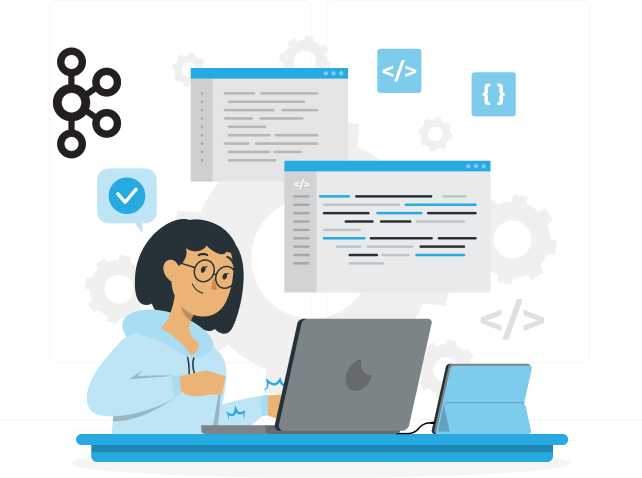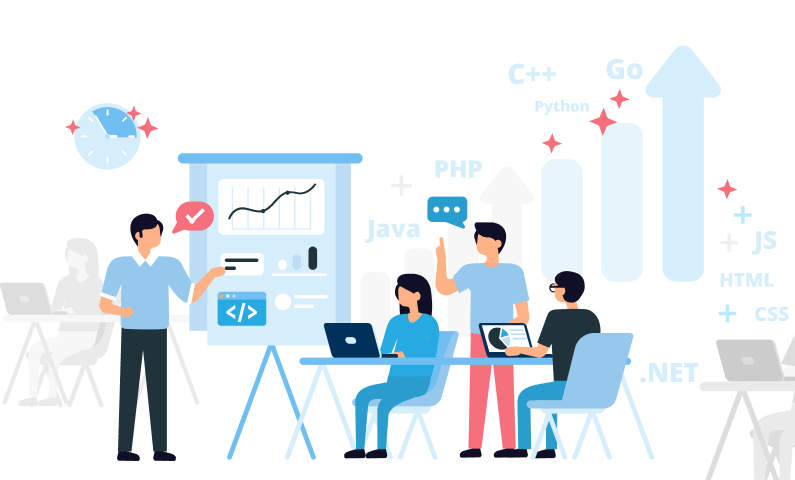As the digital world evolves, businesses are under increasing pressure to stay competitive by upgrading their technology. Modernizing legacy applications is no longer a choice—it’s a business necessity. Application modernization using the right patterns allows organizations to migrate their legacy systems into scalable and future-proof solutions easily.
This blog delves into application modernization patterns, explores the changes that changed the entire picture of application modernization, explains the nature of modernization, and provides actionable insights, real-world examples, and use cases that will make clear the challenges, solutions, and future of software modernization.
What is Application Modernization?
Application modernization is the process of migrating legacy systems into new technologies, architectures, and functionality. It optimizes the software to suit the needs of the current business environment, enhances performance, and makes it long-lasting.
Legacy systems, although critical at their time, eventually become outdated and inefficient in today’s fast-changing tech environment. Modernization bridges this gap and enables businesses to exploit new opportunities while ensuring continuity.
Main Objectives of Application Modernization
Cost Optimization
Modern systems reduce maintenance costs associated with aging infrastructure. Businesses can avoid high operational expenses tied to legacy hardware by switching to modern cloud-native platforms.
Scalability
Modern applications are designed to scale dynamically to accommodate growing user demands or business growth.
Agility
Application modernization facilitates rapid development cycles, enabling businesses to adapt to market trends quickly. Agile methodologies and DevOps practices thrive in modern environments.
Improved Security
Modernized solutions follow current security standards, making them better at defending against evolving cyber threats.
Enhanced User Experience
Modernized applications provide an enhanced end-user experience through sleek interfaces, faster load times, and intuitive workflows.
Challenges of Legacy Application Modernization
Modernizing legacy applications is not without its challenges. Some of the common roadblocks include:
Complex Dependencies
Legacy systems are usually deep in their dependencies, meaning that change can be challenging without impacting the interconnected processes.
Downtime Risk
Migration of critical systems leads to operational disruptions unless it is well planned.
Knowledge Gap
Teams lack knowledge about legacy system management or utilization of the new technologies in the right way.
Compliance Issues
Legacy systems might hold older protocols that do not support modern-day regulatory compliance. The risks related to compliance can come in the transition phase.
Characteristics of Modernized Applications
Modernized applications are characterized by adaptability, efficiency, and user-centric designs. Traits include:
Cloud-Native Architecture
Modern applications are optimized for cloud platforms, which reduces the costs of infrastructure and enhances access.
Microservices-Based Design
Applications are divided into smaller, independent modules that make it easier to deploy quickly and troubleshoot.
Automation Integration
Features such as Continuous Integration and Continuous Deployment pipelines ensure that updates and improvements are streamlined.
Cross-Platform Compatibility
Modernized applications work well on different devices and operating systems, which cater to diverse user needs.
Improved Security and Resilience
With disaster recovery protocols and end-to-end encryption, modernized applications are robust and secure.
Advantages of Application Modernization
Cost Efficiency:
Modernization reduces the need for expensive legacy hardware, cutting operational costs by up to 40%.
Operational Agility:
Organizations can deploy new features and updates faster, enabling them to respond quickly to market changes.
Improved Productivity:
Automated processes reduce manual intervention, freeing up resources for strategic tasks.
Resilience:
Modern systems are more robust and resilient, ensuring minimal downtime and better disaster recovery.
Enhanced Customer Satisfaction:
Modern interfaces and faster response times improve user experiences, driving customer retention.
5 Patterns in Application Modernization
1. Rehosting (“Lift and Shift”)
Rehosting is the process of migrating applications to a new environment, usually the cloud, with little or no changes.
Example Use Case:
A retail company migrated its customer database to the cloud to cut down on operational costs and make it more accessible without changing its structure.
Advantages
- Fast Migration: Ideal for businesses that need immediate cost savings or enhanced infrastructure.
- Minimal Risk: The application remains unchanged, reducing operational disruption.
- Cloud Benefits: Businesses can leverage cloud storage, scalability, and backups without extensive changes.
Challenges
- Optimization benefits are limited.
2. Replatforming
This pattern involves minimal changes to the application’s core code to better leverage the capabilities of the new environment.
Example Use Case:
A healthcare provider containerized its patient management system to ensure it could run seamlessly in a Kubernetes-based cloud platform.
Advantages
- Enhanced Performance: Small modifications unlock better cloud-native features, such as containerization or serverless computing.
- Faster Implementation: Strikes a balance between cost and modernization.
- Scalability Gains: Applications can scale better on new platforms.
Challenges
- Requires infrastructure expertise.
3. Refactoring
Refactoring involves altering the application code to optimize performance while retaining its existing functionality.
Example Use Case:
A logistics company changed the supply chain application into a microservices-based architecture, thereby enabling real-time inventory tracking.
Advantages
- Customization: Offers an opportunity to incorporate modern features like microservices and APIs.
- Enhanced Scalability: Applications can easily adapt to changing demands.
- Improved Security: Updates address vulnerabilities in legacy code.
Challenges
- It requires significant developer resources and expertise.
4. Rebuild
Rebuild is a total redesign of the application by using modern technologies and architectures.
Example Use Case:
A banking institution rebuilt its core platform using serverless architecture to enhance the speed and scalability of transactions.
Advantages
- Complete Control: Offers maximum flexibility for adding cutting-edge features.
- Future-Proof: Ensures long-term scalability and integration readiness.
- Improved User Experience: Applications can be designed with modern UI/UX standards.
Challenges
- Resource-intensive.
5. Replacement
Replace the legacy system and introduce a new, off-the-shelf solution that meets the business needs.
Example Use Case:
An e-commerce company replaced its legacy order management system with a modern ERP solution to enhance the accuracy of inventory.
Advantages
- Modern Features: Gain access to state-of-the-art capabilities and continuous vendor support.
- Rapid Deployment: Implementations are often faster than rebuilding.
Challenges
- Loss of the custom functionalities from the legacy system.
Process of Application Modernization
Modernization involves structured steps to ensure a smooth transition:
Assessment
Understanding the existing system’s limitations, costs, and potential for improvement.
Strategy Development
Identify the appropriate pattern for modernization according to the needs of the business and its technical feasibility.
Implementation
Agile methodologies and automation tools to implement the transition
Testing and Optimization
Bugs, performance bottlenecks, and security vulnerabilities must be identified and fixed in the modernized system.
Transformations That Altered the Outlook on Application Modernization
Microservices Transformation of Netflix
Netflix shifted from a monolithic architecture to a microservices-based architecture. This enabled the company to deploy features at a much faster pace and ensured service did not stop even in times of high traffic.
Airbnb’s Cloud Journey
Airbnb used cloud platforms to scale globally and implemented machine learning algorithms to make personalized recommendations.
Microsoft Azure
Microsoft rebuilt systems to transition into Azure. The company has created a cloud ecosystem that powers businesses across the globe.
Future Trends in Application Modernization
AI-Powered Automation
Artificial intelligence is becoming the heartbeat of modernization, allowing for predictive maintenance and intelligent decision-making.
Edge Computing Integration
Applications will increasingly rely on edge computing to reduce latency and process data closer to the user.
Low-Code/No-Code Platforms
These platforms allow businesses to modernize faster with minimal technical expertise.
Conclusion
Application modernization is no longer a choice for businesses to stay competitive. With the right patterns in application modernization, organizations can turn legacy systems into innovative, efficient, and scalable solutions. It’s a journey that needs careful planning, but the rewards—agility, cost savings, and improved user satisfaction—outweigh the challenges.
Investing in software modernization today ensures a resilient and future-proof technological foundation.

Start a Project with Ajackus











































































